Chef Alfred Prasad

IN CONVERSATION WITH CHEF ALFRED PRASAD
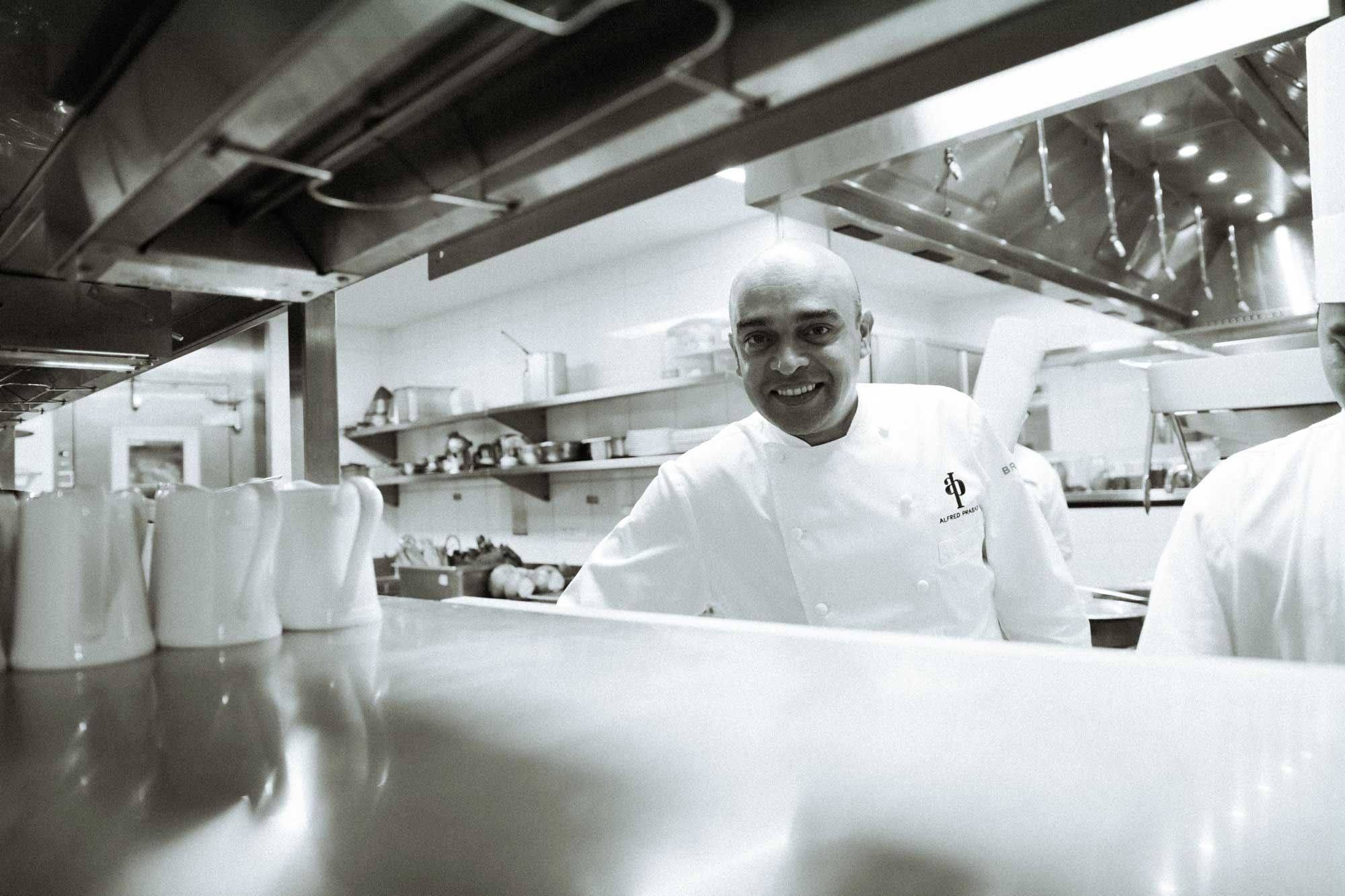
MASTER CHEF / GLOBAL RESTAURANT CONSULTANT / FOOD CYCLE AMBASSADOR
London-based Indian Michelin star chef on his food philosophy “Heritage, Health & Happiness”, the inspiration behind the Oberoi New Delhi’s latest Indian restaurant, Omya, and how it all began.
How did your journey with food begin? Where did it all start?
My food journey began in my mum’s kitchen and she is my biggest inspiration. The smells wafting through the kitchen on a weekend morning —that’s what drew me in. When I was about 10, my elder sister and I would take on minor tasks in the kitchen. Mine was usually peeling prawns, which I quite enjoyed because I enjoyed eating them!
Getting into the industry was never on my radar if I can be perfectly honest —I wanted to fly a fighter plane, I wanted to join the Indian Air Force. It was my mum that had other plans for me, she shot off an application on the sly and I got a call, for my final interview at the hotel school, 18 days into my BSc degree. I gave it a go and that’s when I discovered this whole new world of hotels and hospitality. I come from a small town outside Madras called Vellore which didn’t even have a three-star at the time. It was obviously a completely different world and all the glitz and glamour really excited me. My mum knew something about me that I didn’t!
“It was my mum that had other plans for me, she shot off an application on the sly and I got a call, for my final interview at the hotel school,18 days into my BSc degree.”
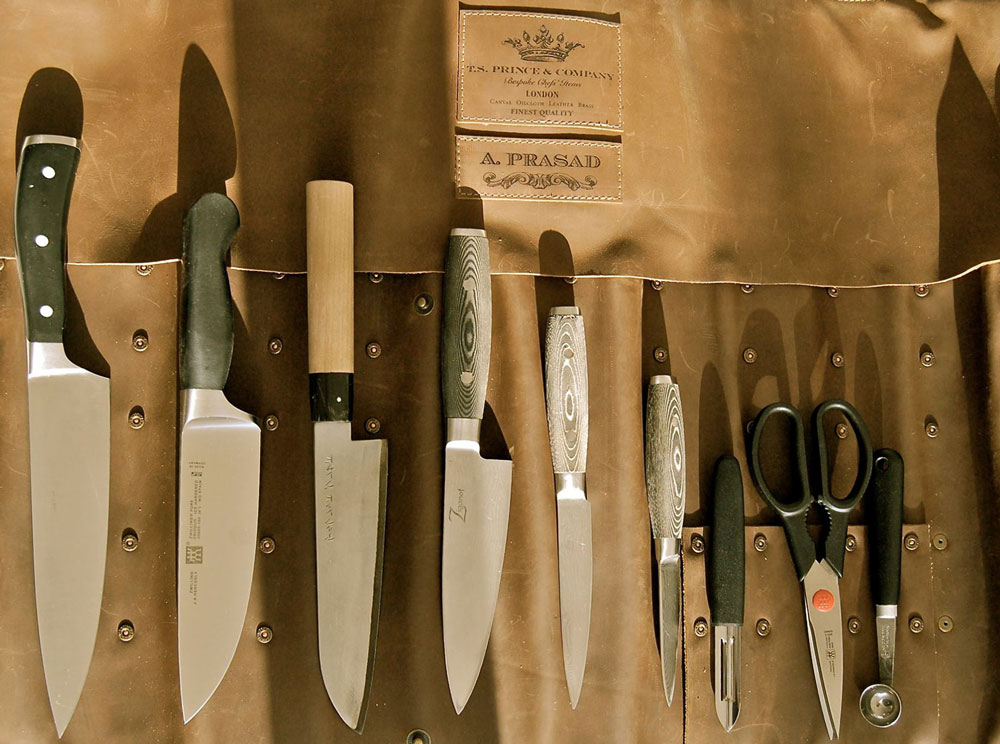
Photo by Alfred Prasad
At the age of 29, you were the youngest Indian to receive a Michelin star for Tamarind in London, what did it take to get there?
I think it was being in the right place at the right time. I was 26 when I left India to move to England. I was six years into my professional career in India, and the opportunity to visit a new land and experience a different country was too good to turn down. At 26, everything I owned must have fit into one suitcase! In college you heard about Albert Roux, Pierre Koffmann, Marco Pierre White and read about their accolades. We knew about Michelin —I knew what it was, but never in my wildest imagination did I expect to share the same platform. What I certainly wanted to focus on was cooking honest Indian food and making sure I made the most of the wonderful ingredients we have. Of course, getting the first Michelin star meant the world because it opens doors, gives recognition on a global platform and makes you an ambassador for your national cuisine. I took that responsibility quite seriously. I always believed that Indian cuisine was among the greatest cuisines in the world and the fact that I was now in a position where I could influence others and steer a direction towards UK’s perception of Indian food, was an absolute honour.
“Getting the first Michelin star meant the world because it opens doors, gives recognition on a global platform and makes you an ambassador for your national cuisine.”
Do you think Indian cuisine compared to French cuisine is looked at differently in the Michelin world?
I think there was a glass ceiling surrounding Indian food in the UK. I give a lot of credit to Michelin UK, and maybe because of the UK’s long love affair with Indian cuisine, they perhaps looked at it more sympathetically. Regardless, they certainly broke that glass ceiling in 2001 by recognising Indian restaurants. Prior to that, it was largely the domain of French or European restaurants and chefs.
“I always believed that Indian cuisine was among the greatest cuisines in the world, and the fact that I was now in a position where I could influence others and steer a direction towards UK’s perception of Indian food, was an absolute honour.”
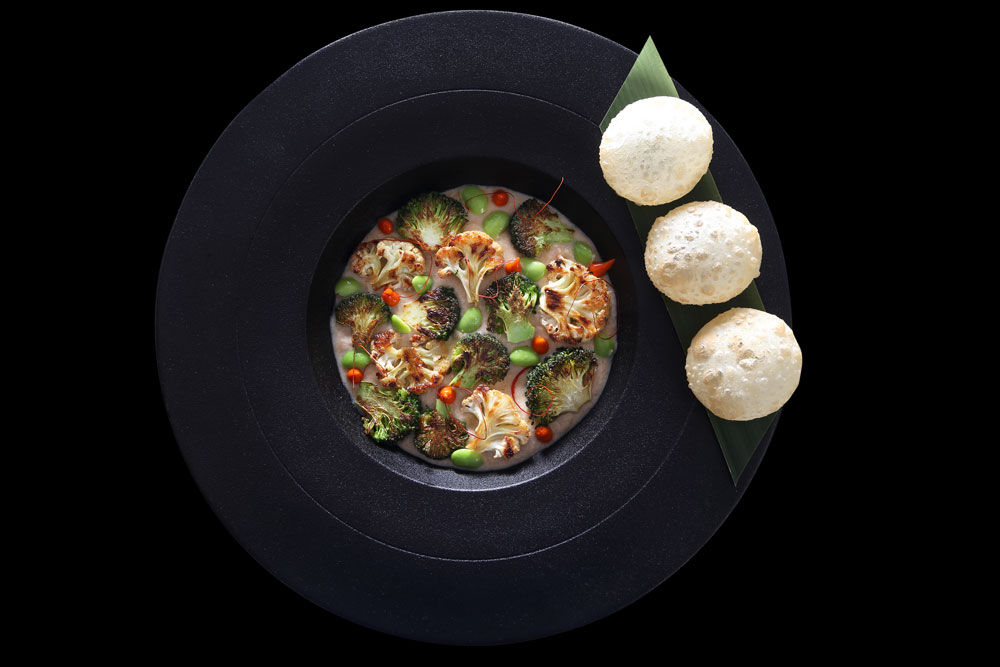
Photo by The Oberoi, New Delhi
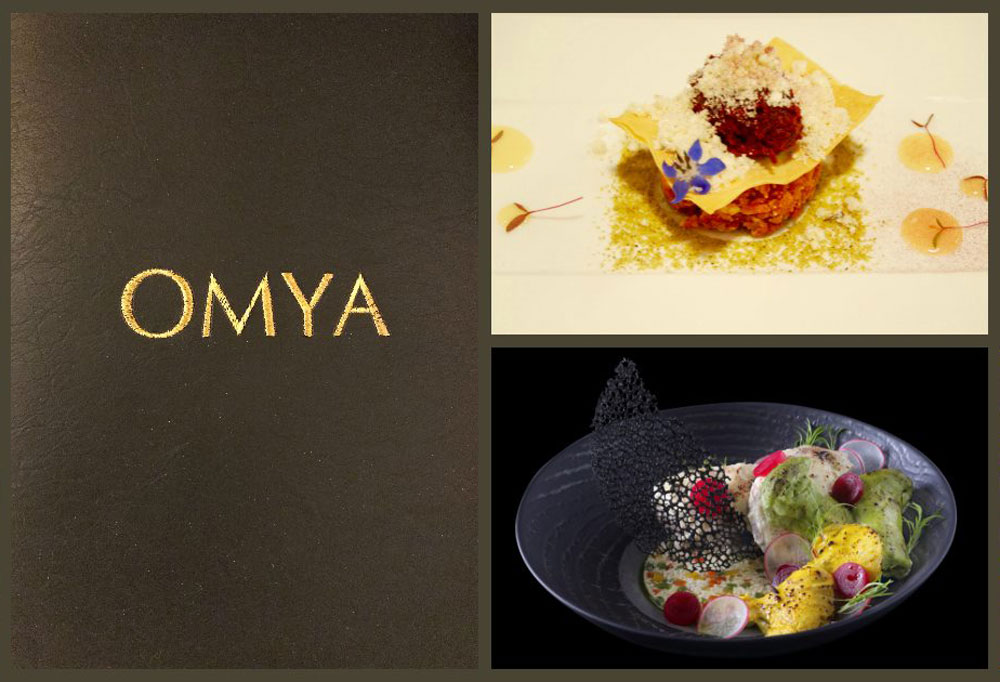
Photo by The Oberoi, New Delhi
Turning the focus to Omya, what was your thought process behind developing the menu?
Throughout my twenty years in the UK, I thought how wonderful it would be to have a presence in India. After college, I got through the ITC programme —advanced chef training based at Maurya, and it was here that I really established my foundation of Northern Indian cuisine. The first posting is usually closer to home, so I was sent down to the ITC Sheraton in Madras —where I headed Dakshin, India’s foremost Southern Indian restaurant. So my seven year professional career in India was split between finest Northern and Southern Indian restaurants in the country. I think that was something I did not take for granted.
At Omya, of course the approach from the Oberoi to consult here was a huge deal for me but I was also humble enough to know that I had been away from the country for the past twenty years and I did not particularly know the Delhi clientele. Based largely on my food philosophy which is: “Heritage, Health & Happiness”, I went through with a presentation that said, If I were to open my restaurant in London tomorrow, this is what I would envision it to be. However, I do not claim to know the Delhi clientele, it’s a complete blank slate for me and all the Michelin stars don’t matter anymore.
I always thought that the brand that we put in will be a brand within a brand. So, there was definitely a certain Oberoi way that we needed to fit into. Omya means beautiful and I wanted to encapsulate Indian food that looks beautiful; authentic flavours that actually satisfy the first impact of looking. At Omya, we’re not competing with fusion Indian restaurants or northern Indian restaurants. It’s more about creating a brand that can deliver authentically.
“At Omya, we’re not competing with fusion Indian or northern Indian restaurants. It’s more about creating a brand that can deliver authentically.”
Tell us a little bit about the summer menu at Omya.
On each quarterly visit, I address the feedback of the previous three months to see any glaring omissions on the menu and one thing that we identified very quickly was a lack of vegetarian options. Seafood, of course, is a challenge in Delhi. To give you an example, we had an appetiser called Indian ocean — soft shell crab, tandoori fish and prawns. Most often you’d have customers say —I’ll have the Indian Ocean but not the crab or no prawns, only fish. It was never the complete dish we had envisioned. That’s gone off the menu and we’ve added a fish and a prawn dish.
Also, one of the things I enjoy most about summer in India is mangoes —it’s my favourite fruit! In the UK we do get mangoes but it’s only the Alphonso and that’s definitely not the best out there. My personal favourite is the Mulgoba or Banagana Palli! The opportunity to incorporate mango in its various forms and elements in the summer menu is something I couldn’t resist. I’m definitely looking forward to my next visit to India to enjoy the whole variety. For now, we use everything from raw mango to sun dried mango to fresh mango for our deserts, sauces and salsas. Towards the peak of the mango season we will be able to do a mango tasting menu as well —every course will have some element of mango.
“The opportunity to incorporate mango in its various forms and elements in the summer menu is something I couldn’t resist.”
How has the palate for Indian food changed over the years, both in India, since you left, and in London: your new home?
There was a time when the dhabas were more popular than any hotel restaurants. Apart from Bukhara, which was again the same thing but in a nice setting. Nobody felt the need, dared not, to experiment but thanks to our customer now being well travelled and a little more adventurous, we’ve seen an explosion of Indian concepts in the country in the last 10 years (at all price points) and that has really helped our customers perception as well. Now you see concepts mushrooming all over India, with micro cuisines coming to the core as well. It’s a very interesting time to be back in the country and to do something like this.
London, for the longest time has been seen as the destination for Indian food. Indian chefs dared not experiment, they were looking to London for inspiration. But there’s another side to Indian food in London —there are about nine thousand Bangladeshi curry houses. I always say that I’m very grateful for these pioneers, who moved to the UK when the British destroyed the cotton industry in India and created the cotton industry in Manchester. The cotton industry in the UK died a natural death because of synthetic fabrics and these people were left with nothing to do. The one thing they knew was to cook food: they chose to cook food that they thought the British would be able to take and that has remained. They had one large pot of a “mother sauce” and everything goes into it, from onion trimmings to carrot peels and this sauce is used for everything. It’s definitely not the food they themselves would eat at home. Of course the spice element in the dishes meant that the British got addicted to it —not knowing how much food colour or sugar went into it. But the flavours were very different to fish and chips, steak and kidney pie. Turmeric, chilli, cardamom and cinnamon and the blends of all these spices were too hard to resist.
“Now you see concepts mushrooming all over India, with micro cuisines coming to the core as well. It’s a very interesting time to be back in the country and to do something like this.”
Has London gone beyond the world of Chicken Tikka Masala?
The curry houses are dying a slow and natural death because people are now more aware of what real Indian food is. The average British client is now more well travelled to regional India and knows the difference between Kerala and Bengali cuisine —they realise now that each state has about twenty micro cuisines within it. They are less ready to accept this one-sauce-fits-all Bangladeshi model. In their place have sprung up concepts that focus on authenticity and niche concepts like Dishoom —which has largely taken its inspiration from Britannia in Bombay and converted it to serve pan-Indian food in a beautiful setting. But London might not be the capital of Indian food for long —India has taken that back and rightfully so!
“The average British client is now more well travelled to regional India and knows the difference between Kerala and Bengali cuisine – they realise now that each state has about twenty micro cuisines within it.”
“What we put into our bodies is so important. It is more important than what we wear, how we look, how we do our hair.”
Your work with food charities is inspiring and we wanted to ask if you had any ideas about food wastage in India?
There are two food charities I work with in India. Akshaya Patra run the noon meal scheme in India that feeds 2 million children everyday. The most shocking thing is that it costs an average British donor GBP 10 to feed a child for one year. Akshaya Patra matches that and delivers 280 hot, fresh, nutritious lunches a year! I am the UK Chef ambassador and I just try and promote as much awareness as possible! As a chef, I can not see why one would not be drawn to food charities because we have a voice that is beyond the people that you meet and to be able to spread awareness of organisations like this: it is simply wonderful!
FoodCycle is a smaller charity —their model is based on hub kitchens and they tie up with local supermarkets to pick up surplus fruits and vegetables. It could be lots of lettuce and onions and nothing else, or it could be a mixed bag —we take it back to the hub kitchen and make a three course meal for the homeless. I volunteered from picking up the produce, creating the meals, and giving it away to not just the homeless but also widows —not because they can’t afford a hot meal or can’t cook for themselves, but for companionship.
I also use the knowledge I learn from FoodCycle to educate people in their own homes, to reduce food waste. What I like most about FoodCycle is their motto: food waste and food hunger should not coexist. The administration should look at hotels, institutions that throw away food —even wedding food! It takes very little to put together a group of volunteers, collect at source and distribute to a hub where it can be fed to the homeless or the destitute. Also, we know that in a country like India because of the temperatures, almost 40% of the food produced from a farm doesn’t even reach the supermarket because of the transport logistics —there is wastage on all levels. Our biggest challenge is feeding this growing population and yet, the amount that is wasted, is enough to feed us twice over. Even your average Gurdwara is the perfect example of giving back! And there is so much more that can be done, so it is just about raising awareness —it is the least that we can do.
“As a chef, I can not see why one would not be drawn to food charities because we have a voice that is beyond the people that you meet and to be able to spread awareness of organisations like this: it is simply wonderful!”
“Food waste and food hunger should not coexist: Our biggest challenge is feeding this growing population and yet, the amount that is wasted, is enough to feed us twice over.”
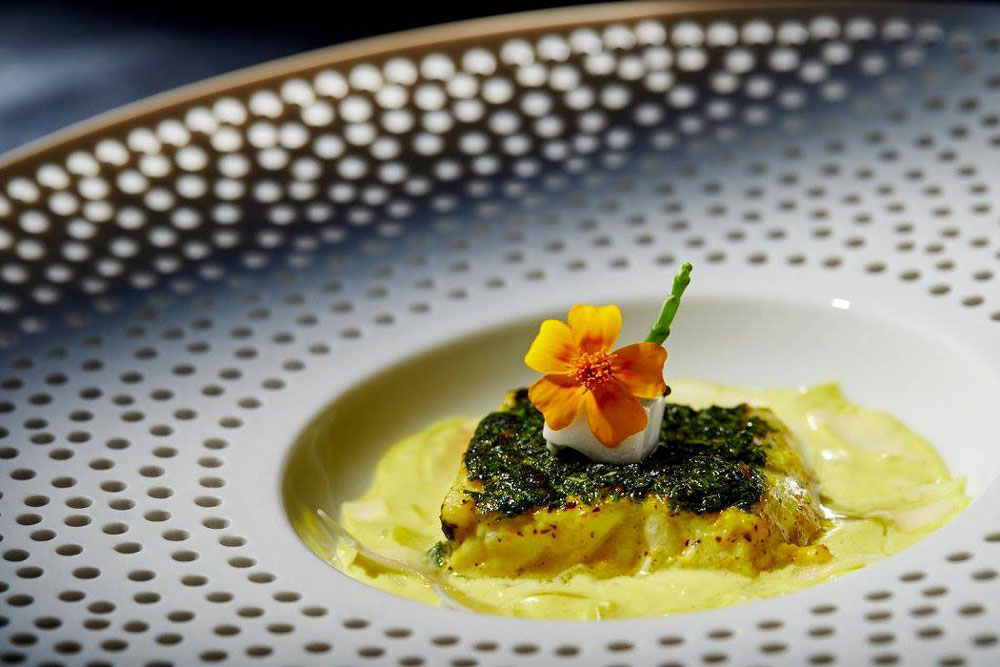
Photo by Alfred Prasad
You’re clearly passionate about Indian food – what’s your favourite comfort food?
It’ll have to be one of mum’s best dishes…or maybe I’ll have to pick two! She cooked an amazing prawn curry. *Recipe to be revealed this Mother’s day!* She also did a lamb with fresh methi and potato —an Anglo-Indian trait where meat is always cooked with vegetable. The lamb with potato curry was absolutely divine! My own comfort food would probably be my signature biryani —a blend of two or three different types of biryani which I claim is the best biryani in the world. Why wouldn’t I do that?
What do you think about the recent food trend around turmeric/ghee, ingredients that have been used in Indian kitchens for centuries?
I think the same applies to yoga and ayurveda in many ways —it took the western world to make it fashionable for us! When I was growing up, if someone suggested doing yoga I would say “forget it”! Our grandmum’s used to give us tumeric —whether it was a cut on the finger or if you weren’t feeling well —there was always turmeric milk and ultimately it took a tumeric latte in Starbucks in San Francisco to make us say —Ah! Turmeric, the new superfood. There are so many examples of how we were better off before all this happened and now we’re going back to organic and local. It’s unfortunate because with a little more foresight, we could’ve stayed the way we were without going through that silly circle!
Any predictions for the top food craze for 2019?
More turmeric!
Certainly more going back to basics. My dad was a doctor and we lived on a hospital campus. I used to see him eat millet, ragi, bajra and jowar. We ignored it for all this time, but our rural population is still very much living off that. Those grains I think will continue to come back and be in mainstream diets. Now we see food intolerances in Europe and certainly in India —I believe a lot of Indians are secretly intolerant to gluten and lactose and don’t even know it.
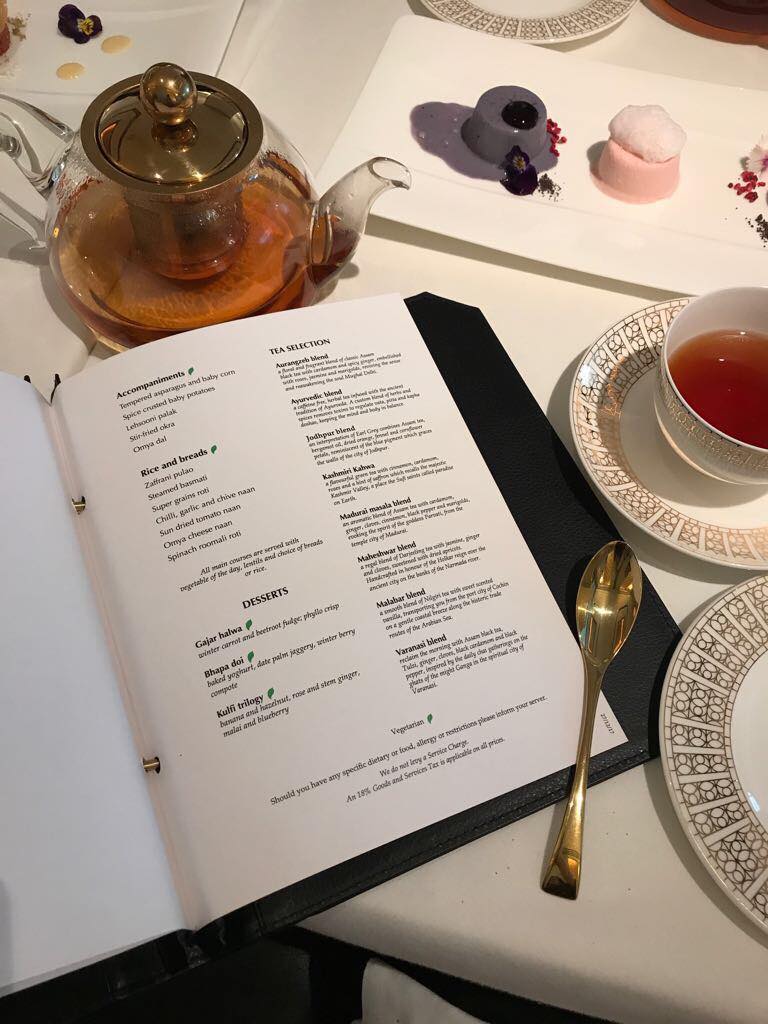
Photo by Radhika Chopra
It is common to see Chinese food paired with a pot of Jasmine tea, is there room for a tea pairing with Indian food beyond the Masala Chai?
I think it needs much more awareness from the consumer on the value of artisanal tea. The route, in keeping with Omya philosophy, is the “health, heritage & happiness”. It has been scientifically proven that when eating a meal that you should never drink cold water. You can take your average Rogan Josh, or the fat from the Rogan Josh and put it in a beaker and add some cold water and swish it around —do the same with hot water and you will see the difference of what is happening inside. It’s a no brainer —we should just not keep water in the fridge! My favourite tea blend at Omya is the Ayurvedic Blend.
Having created beautifully plated dishes, you clearly have an eye for aesthetics. Do you think Indian F&B luxury brands can compete in the global market?
Absolutely! The fact that most of the international brands want to be in India is probably an answer to your question. They see, not only the consumer being ready but they also see an opportunity. A hundred years ago, French cuisine was the only fine cuisine on the planet. They never saw the need to evolve. So when the Spanish came up with their concepts, they said “Ah! That’s not food”. Paris is no longer one of the top gastronomic cities anymore, when it clearly was 60 years ago! India did not adapt for so long was a disadvantage, but it has now caught up pretty rapidly and we can compete on that global stage for sure!
“India did not adapt for so long was a disadvantage, but it has now caught up pretty rapidly and we can compete on that global stage for sure!”
“Our grandmums used to give us turmeric —whether it was a cut on the finger or if you weren’t feeling well —there was always turmeric milk and ultimately it took a turmeric latte in Starbucks in San Francisco to make us say —Ah! Turmeric, the new superfood.”
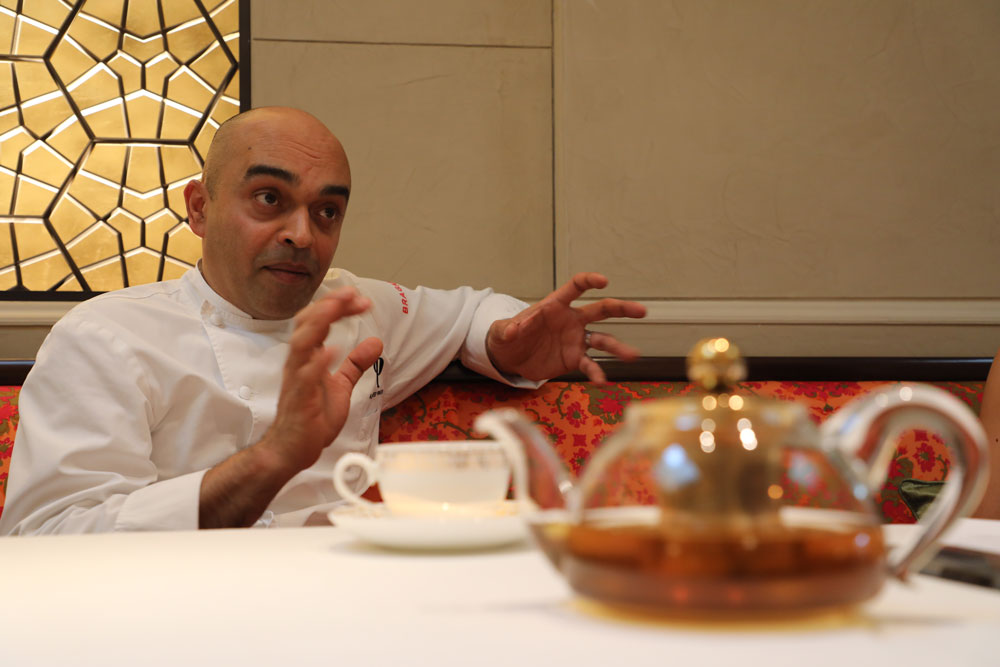
We have prepared a Rapid Fire round for you! I am going to throw some Indian food stereotypes at you.
Do I eat this with my hands?
It’s the best way to eat.
If I might add a bit to this, it has been appreciated by people across the world that eating with your hands helps you interact with your food more. A bit like a mother holding a baby: it makes all the difference.
Do you have curry for breakfast?
Never…but that’s because I am an Anglo-Indian and breakfast has to be sweet.
Do you think I should have that with Naan bread?
Naan bread —a bit like saying chai latte.
Well that’s our next one, could I get some chai tea?
That’s ridiculous —it’s like “tea tea” and “bread bread”. “Hello Hello”.
Could I get that in masala flavour?
Which masala flavour?
Am I going to get Delhi belly after this meal?
It’s never with the food, it is always with the ice or the drink. Be careful with your water.
*Mum’s Methi Mutton Curry*
“This all-time favourite dish means home to me. I have loved it as a child and after I left home and visited my folks, this would be my welcome meal by mum.”
Ingredients: (Serves 4)
4 tbsp vegetable oil
6 cloves
6 cardamoms
2 cinnamon stick
2 large onions, sliced
2 tsp ginger-garlic paste
½ tsp turmeric powder
1 tsp red chilli powder
500g mutton shoulder, diced
3 ripe tomatoes, chopped or pureed
½ tsp tomato paste
2 medium potatoes, cut into 8 pieces each.
Salt
1 tbsp Oil
3 cloves garlic, chopped
3 bunch fresh methi (fenugreek), leaves only, washed
Method:
*Heat vegetable oil in a large cooking pot; add cloves, cardamom, cinnamon and sauté for 2 mins to infuse the oil. Add onions and sauté until deep golden brown.
*Add ginger-garlic paste, turmeric powder, red chilli powder and sauté for a further 2 minutes.
*Add mutton and fry on a high heat until seared lightly.
*Add tomatoes, tomato paste and salt. Cook for 10 minutes on high heat.
*Add potatoes, give it a good stir. Add 2 cups of water and salt to taste. When the mixture bubbles, lower the heat, put a lid to the pot and slow cook until the lamb is tender and potatoes are cooked.
*While the lamb is cooking, heat oil in a frying pan. Add garlic, fry gently for a minute and add fresh methi leaves. Fry until water evaporates and the leaves are well fried. Set aside.
*After the lamb is ready, increase the heat to high, add the methi and stir well to combine. Bring to a boil and then set aside.
Want to read more? Join our mailing list!
ARTICLE INFORMATION & CREDITS
Published
Interview by Keertna Sapra & Radhika Chopra
